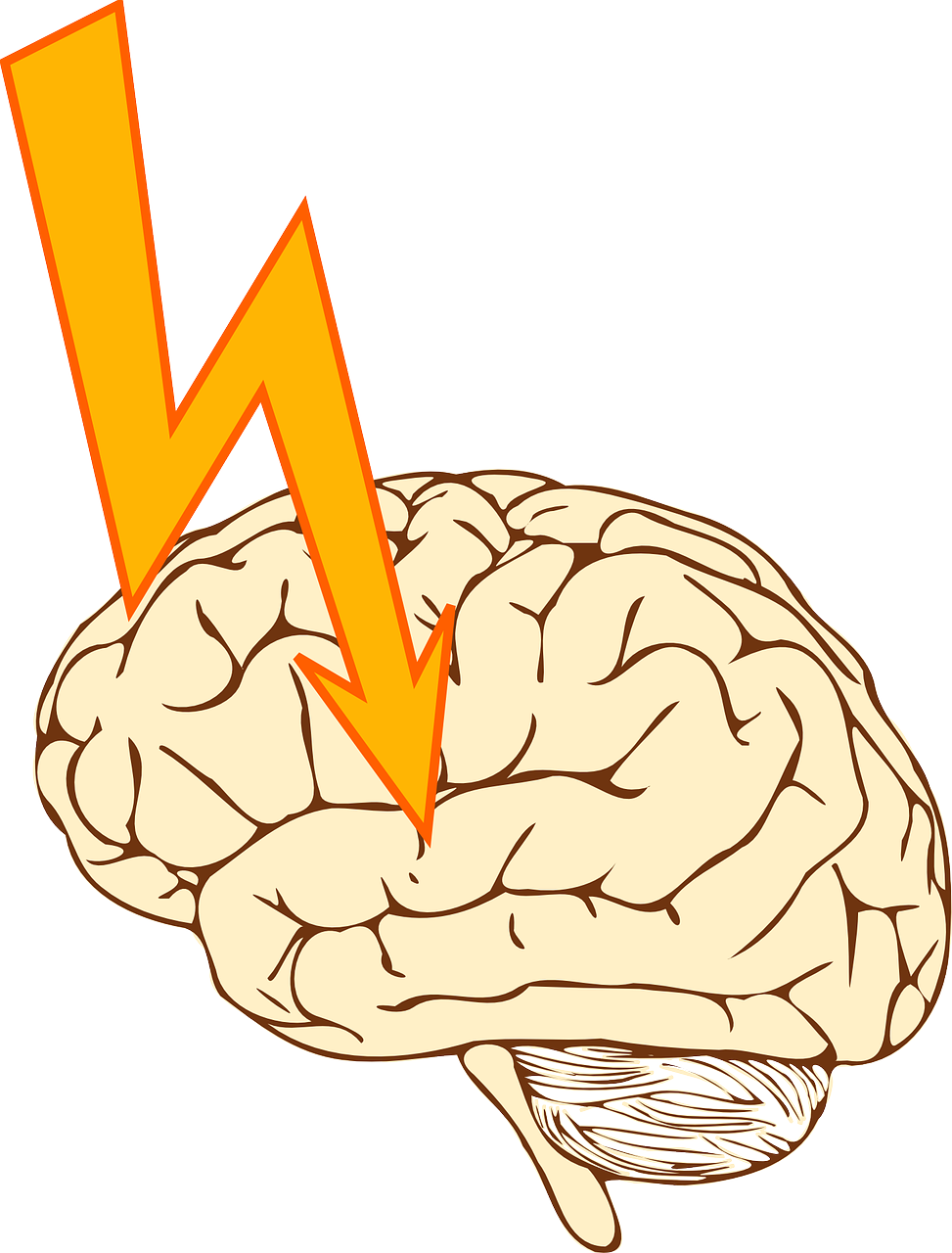Difference Between Seizure and Syncope
What is Seizure and Syncope?
Seizure or fits activity happens in up to twenty percent of episodes of syncope (temporary loss of consciousness). Though some symptoms of both the conditions are similar, the two terms are entirely different from each other.

Seizure
A seizure takes place because of unusual and abnormal electrical activity inside the cerebral region (the brain). Sometimes, it happens and goes unnoticed. Or, in some severe cases, it results in cramps, dizziness, shaking of body uncontrollably, trembling, unconsciousness (oblivion) and convulsions, and muscle contractions.

Syncope
Syncope is defined as the partial or temporary loss of consciousness. It usually results because of insufficient flow of blood to the brain due to sudden drop in the blood pressure. The initial symptoms include; vomiting, sweating, confusion and blurred vision
Difference between Seizure and Syncope
Definition
Seizure
Seizure is defined as a sudden illness, especially an epileptic fit or stroke.
Syncope
It is defined as a transient or sudden loss of consciousness
Symptoms
Seizure
- Loss of mobility
- Unconsciousness
- Uncertainty and confusion
- Loss of alteration of basic senses (smell, sound, look, taste, or touch)
- Incontinence
- A staring spell
- Change in behavior and emotions
- Numb and prickling sensation
- Trembling and shaking
- Muscle contractions and cramps
- Uncontrollable jerking movements of the arms and legs
- Postictal flaccidity and drowsiness
- Cognitive or emotional symptoms, such as anxiety, fear, or déjà vu
Seizure is in progress includes symptoms like:
- Biting your tongue
- Making unusual noises, such as grunting
- Clenching your teeth
- Losing consciousness, followed by confusion
- Losing control of bowel function and bladder
- Uncontrollable muscle spasms
- drooling or frothing at the mouth
- Development of a strange taste in your mouth
- Rapid and sudden eye movements
- losing control of bladder or bowel function
Syncope
- Feeling of dizziness
- Irregular heart beat
- Wooziness
- Vertigo, or a feeling that the room is moving
- Felling of black out
- Feeling of drowsiness and grogginess
- Feeling of lightheadedness
- Temporary drop in blood flow to the brain
- Fainting, especially after exercising or eating
- Feeling weak, fatigued, unsteady when standing.
- Changes in vision, for example having tunnel vision or seeing spots
Causes
Seizure
- Epilepsy
- Meningitis and encephalitis (kinds of brain infection)
- Drug abuse
- Medication withdrawal, like Xanax
- Withdrawal from narcotics, or alcohol
- Electric shock
- Tumor in brain
- Abnormal glucose or sodium levels in the blood
- Use of narcotics, such as heroin and cocaine
- Injury to brain that happens during childbirth or labor
- Brain problems that occur before birth (congenital brain defects)
- Electrolyte imbalance
- Repetitive flashing lights or sounds, as in video games
- Asthma drugs and medications like antipsychotics
Syncope
- Pregnancy
- Exhaustion
- Strenuous physical activities, such as lifting a heavy weight
- Dehydration
- Dilated blood vessels and low blood pressure
- Stenosis, or a blockage of the heart valves
- Extreme tension and stress
- Straining, such as to have a bowel movement
- Extreme fear or pain
- Having blood drawn
- Arrhythmias, or an abnormal heartbeat
Types
Seizure
- Tonic seizures
- Absence seizures (formerly known as petit mal)
- Drop attacks (Atonic seizures)
- Grand mal (Tonic – clonic or convulsive seizures)
- Clonic seizures
- Myoclonic seizures
Syncope
- Vasovagal syncope (also termed as cardio-neurogenic syncope)
- Autonomic Nervous System (ANS) (The Autonomic Nervous System automatically controls many functions of the body, such as bladder control, heart rate, breathing, and blood pressure
- Situational syncope
- Postural syncope (also termed as postural hypotension)
- Neurologic syncope
After effects
Seizure
After seizure, the person may feel sleepy, experience headache and heaviness and may be confused
Syncope
After syncope, the person feels lethargy but he does not feel confused
EMS Vitals
Seizure
Usually BP and HR elevated (rare types of temporal lobe seizure can cause bradycardia)
Syncope
Could have low BP and HR
Warning
Seizure
>50% have some aura, usually hard to describe, like smell or a déjà vu.
Syncope
Darkened and blurred vision, lightheadedness, feeling of faintness
Nature of trigger
Seizure
Range of rare triggers and flashing lights is best known
Syncope
Differs between types: pain, standing, emotions for VVS; specific trigger for situational syncope; standing for OH
Treatment
Seizure
- Medicines termed as AEDs (anti-epileptic drugs) like sodium valproate, lamotrigine, Carbamazepine, topiramate, levetiracetam, ethosuximide, oxcarbazepine
- Seizures causing parts in the brain are removed by a small surgery
- Keto diet that can help control seizures.
Syncope
- Pharmacologic or mechanical restraints
- A drug termed as fludrocortisone acetate
- Glucose administration
- Temporary pacing or defibrillation
- Insertion of an electrical pacemaker through surgery to regulate the heartbeat
- Pharmacologic circulatory support
Summary
The points of difference between Seizure and Syncope have been summarized as below:

- Difference Between Global Warming and Greenhouse Effect - May 18, 2024
- Difference Between Vaccination and Immunization - March 3, 2024
- Difference Between Selective Mutism and Autism - February 25, 2024
Search DifferenceBetween.net :
Leave a Response
References :
[0]Image credit: https://i.vimeocdn.com/filter/overlay?src0=https%3A%2F%2Fi.vimeocdn.com%2Fvideo%2F849284447_1280x720.jpg&src1=https%3A%2F%2Ff.vimeocdn.com%2Fimages_v6%2Fshare%2Fplay_icon_overlay.png
[1]Image credit: https://storage.needpix.com/rsynced_images/epilepsy-156105_1280.png
[2]Arthur, W., & Kaye, G. C. (2000). The pathophysiology of common causes of syncope. Postgraduate medical journal, 76(902), 750-753.
[3]Beck, H., & Elger, C. E. (2008). Epilepsy research: a window onto function and dysfunction of the human brain. Dialogues in clinical neuroscience, 10(1), 7.
[4]Brignole, M. (2007). Diagnosis and treatment of syncope. Heart, 93(1), 130-136.
[5]da Silva, R. M. (2014). Syncope: epidemiology, etiology, and prognosis. Frontiers in physiology, 5, 471.
[6]Stafstrom, C. E., & Carmant, L. (2015). Seizures and epilepsy: an overview for neuroscientists. Cold Spring Harbor perspectives in medicine, 5(6), a022426.
